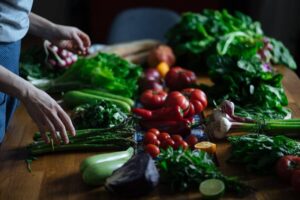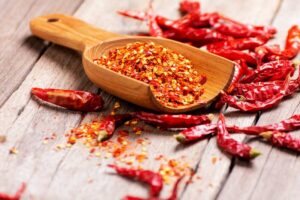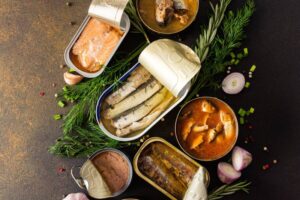The idea that our favorite foods contain plastic is unsettling!
This isn’t exactly something any of us think about, but by the time we open that container of milk, it has taken a long journey to reach our cereal.
You may have some idea of that voyage: From “Betsy” to processing, packaging, and supermarket shelves. But with each step, there’s a chance for something “extra” to sneak in… something that shouldn’t be there. And that unexpected ingredient is a plasticizer.
This is a chemical used to make plastic more durable and flexible. The most common are called phthalates, which show up inside most of us, right along with other chemicals found in plastic, including those pesky BPAs.
As you probably already know, these have been linked to a huge list of health concerns.
Experts have looked into bisphenols and phthalates in food and its packaging a few times over the past decades to check a wide variety of foods to see how much of the chemicals people REALLY consume.
The answer? Well, it might make you put down that fork! And despite growing evidence of potential health concerns, phthalates and bisphenols remain widespread in our food. So on that note, did you know these 6 foods contain plastic?
… Continue reading as we explore how to reduce your exposure!
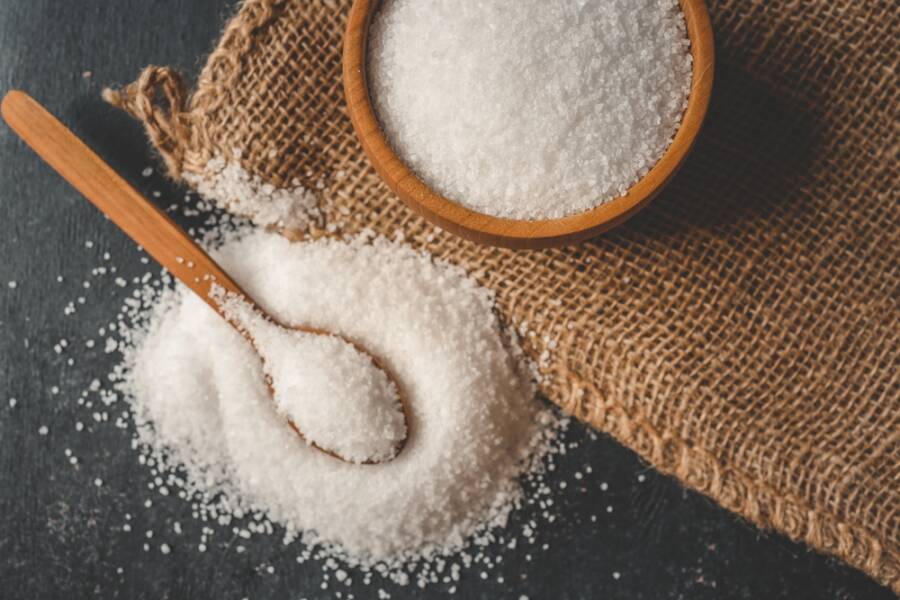
Salt
Take a guess at what’s happening to all the plastic we’re using and throwing away daily. It turns out that only 9% of it gets recycled. With another small amount incinerated, most of it ends up in landfills or our ocean.
As plastic floats around in the ocean, it releases micro and nanoplastic, which then makes their way back into households around the world through the salt we use in our meals.
A study testing the bulk of microplastics in different salts available in China discovered that sea salt contains roughly 680 particles of plastic in every 2 pounds.
This is more than other kinds of salt, but synthetic particles were also discovered in well salt, rock salt, and lake salt. Further research has demonstrated that similar amounts have been found in the salt sold in many countries around the world, including the US.
The conclusion was that rock salt is the best alternative. It contains significantly less synthetic material than sea salt.
Ideally, try to go for a high-quality option likely created before the world’s plastic pollution became the intense issue it is today. For instance, true Himalayan pink salt would suit that standard.
Ready-to-eat meals
Ready-to-eat meals that are packaged in plastic are also likely to contain a wide range of synthetic or semi-synthetic compounds.
Microplastic particles are likely to get free of the packaging and seep into your food during microwaving, heating, or in the production process. Whenever you can, opt for cooking at home. It’s obviously the more environmentally friendly AND healthier choice.
Nevertheless, we understand that every once in a blue moon, you might need to rely on the occasional ready-to-eat meal.
In that case, look for the ones packaged in cardboard, natural wood, or paper-based alternative containers and trays that can be heated up with or without the packaging. Be cautious, though. Some types of cardboard may still be lined with plastic!
Chewing gum
You probably never realized it but when you’re chewing gum, you’re actually chewing plastic! That’s right, folks! Most chewing gum you buy these days contains plasticizers as part of the base.
The polymer used in chewing gum is pretty much like the one used to produce car tires…that doesn’t sound very tasty, does it? The good news, though, is that there’s a plastic-free alternative to gum that’s making a comeback.
Way back before “plasticky” gum existed, people used to chew on something called chicle made from tree sap.
Some smaller companies are sticking to this old approach, while new startups are bringing some clever alternatives to the market that use chicle tree sap and other natural ingredients rather than plastic. So, at least there is SOME good news, right?
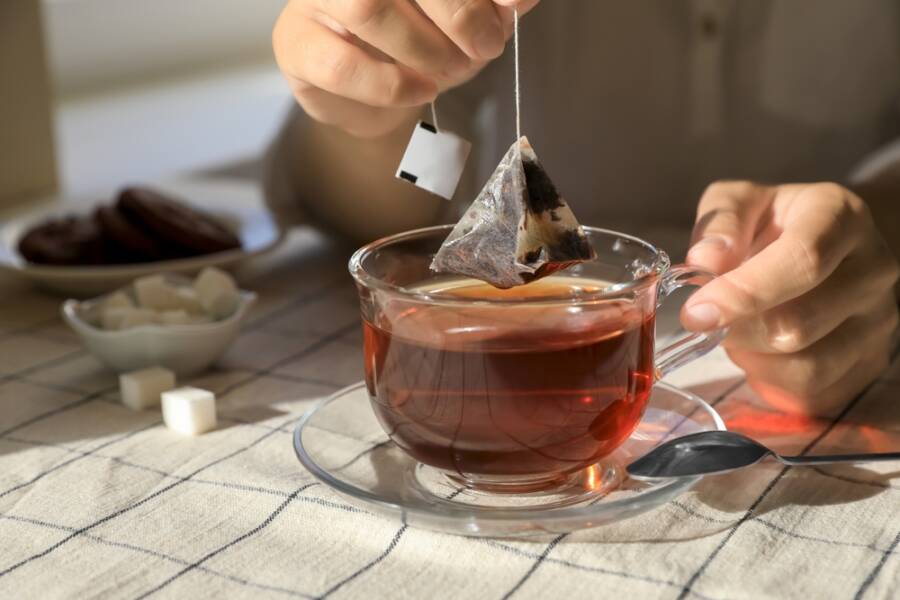
Teabags
Do you enjoy a cup of tea under a blanket with a good book? Well, you might not want it anymore after you learn that besides herbs or tea leaves, that teabag also most likely contains some kind of toxic chemicals!
According to the American Chemical Society, soaking a single teabag containing plastic can release approximately 3.1 billion nanoplastics and 11.6 billion microplastics into your tea!
The good thing, though, is that there’s a very easy way to avoid all this AND enjoy some better tea. Simply drink loose-leaf tea instead! It doesn’t contain any synthetic materials and helps you cut down on the amount of waste you’re potentially producing.
And nowadays there are even some brands that have started selling plastic-free teabags if loose-leaf tea isn’t for you.
Fish and seafood
Since we already discussed salt containing plastic, it probably won’t surprise you to find that seafood and fish aren’t exactly plastic-free either. In fact, the reality is that the issue is even more extreme than with salt.
Microplastics have frequently been found in the digestive tracts of fish all over the world. According to a study, it seems like these particles can also be found in other parts of the body, including the parts we eat.
Besides that, it seems canned fish also contain plastic. And lovers of other seafood are likely to ingest even more plastic. For instance, a person who eats mussels on a regular basis will consume an estimated amount of 11,000 microplastics yearly.
Yet, we should mention that microplastic content in seafood varies significantly between countries. The easiest way to avoid microplastics from seafood and fish is to opt for organic plant-based options instead.
This is a much more environmentally friendly alternative, and, with the range of plastics of mercury in seafood, it’s also better for an overall healthy diet.
Soda and bottled water
We all know that the plastic bottles that are used for water and soda are bad for the environment. But did you know that they also release and ooze plastic into the actual liquid?
Many people are already trying to cut out soda from their lives because it’s the opposite of a healthy choice. Folks are also giving up on bottled water because of the environmental damage and big price tag.
But here’s another shocking reason to give up single-use plastic bottles: Water from a bottle includes twice as much plastic as the kind you get from the tap!
And yet another sad fact is that if you leave a plastic bottle in a hot car or direct sunlight, that will help chemicals like BPA filter into the water. So what’s the best alternative for you? Tap water, of course!
It’s better for the environment, it’s easier on your wallet, and it contains much less plastic. If you can’t resist having the occasional soda, try to choose glass bottles with metal lids that won’t release plastic into your beverage.
And if you’re always on the run, grab one of these Stainless Steel Sports Water Cup Flasks with 3 Lids from Amazon!
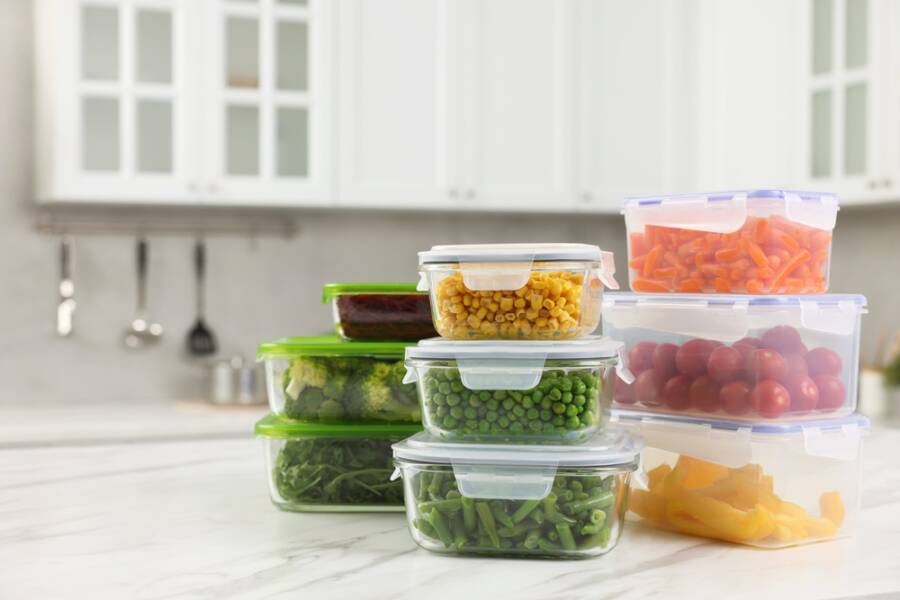
Bonus: Here are a few tips on lowering your risk of consuming plastic!
You can make a few changes on an individual level to decrease your consumption of microplastics. Small actions can make a big difference for both the environment AND your health. Here’s what you need to know:
-Avoid plastic food containers and kitchen tools because, regardless of the temperature they’re sitting at, they can result in microplastics leaching into the food it’s storing. Invest in glass food storage containers to make a difference at home.
You should also replace your cooking utensils, cutting boards, mixing bowls, and any other plastic tools you’ve got in your kitchen.
-Be selective of the high-fat products you buy because products, like dairy, can be more susceptible to microplastic leaching than other options. Research shows that there’s a more elevated phthalate concentration in products with high-fat content.
This is partially due to the fact that phthalates and many other plastic chemicals are fat-soluble.
-Fragrances in many products like perfumes, cosmetics, soaps, and more may contain plastic chemicals, like phthalates. These chemicals help fragrances last longer.
And if you MUST have a soap that smells pretty, opt for high-quality organic essential oils in glass bottles instead.
Who knew all these foods contain plastic? We’re you shocked to learn all this? Please feel free to share your thoughts with us in the comments section.
And if you enjoyed this article, we think you’ll also like: 11 Cancer Causing Foods You Weren’t Aware Of



